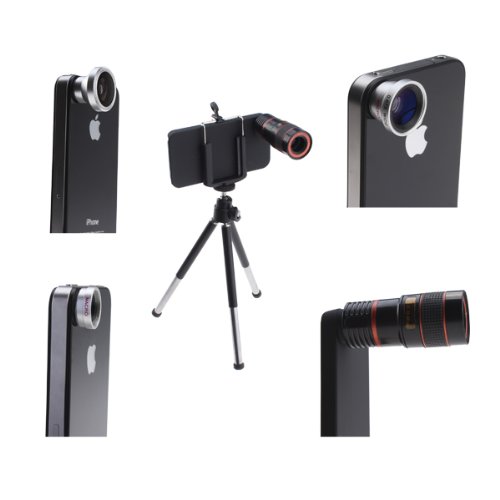It's useful to think of telephoto lenses as telescopes for your digital SLR camera. Like a telescope, a telephoto lens enlarges your subject, bringing it closer and making it appear larger in your viewfinder and on your camera's digital sensor.
Lenses with a focal length longer than that of a 50mm standard lens can be classed as telephotos. In practice though, 85mm is regarded as the shortest telephoto focal length for fixed or prime lenses, while for telephoto zoom lenses, the short end of the telephoto range starts around 70mm, as in a 70-200mm telephoto zoom.
The longer the focal length of a lens, the greater its magnification. Thus a 100mm telephoto lens gives twice the magnification of a 50mm standard lens. In practice, this means the subject's height and width in the viewfinder - and hence on the digital sensor or film - is doubled when you attach a 100mm lens to the camera. Similarly, a 400mm telephoto lens gives eight times (x8) the magnification of a standard lens.
If you're on safari and there's a big male lion staring at you from 50m away, he's going to appear very small in the viewfinder with a 50mm lens on your digital SLR. Change that to a 500mm telephoto lens, and the lion is magnified 10 times. Now he nearly fills the frame and you can even see the scars on his face and the piercing yellow eyes boring into you.
From the above example, it should be clear that telephoto lenses prove invaluable when you can't get near enough to the subject you're photographing. With a tele lens you can, for example, take sports shots from the sidelines or shoot pictures of wild animals from the safety of a vehicle or hide.
They're also very handy for taking candid shots of children, for reportage, or any other situation where you want to remain inconspicuous, as they allow you to shoot unnoticed while you're some distance from your subject.
Medium telephotos in the 85 to 105mm range are also highly prized as portrait lenses as they tend to flatter the subject and allow a shallow depth of field that throws distracting backgrounds out of focus.
Prime v Zoom Telephoto Lenses
Telephoto lenses fall into two main categories:
1. Fixed focal length, or prime, telephotos
2. Zoom telephotos, offering variable focal length
1. Prime telephotos offer optimum image quality because they have fewer lens elements, so fewer compromises have to be made. Their main disadvantage is the fixed focal length, limiting your options when composing the shot.
When photographing fast moving subjects, as in sport or wildlife, you can find the subject suddenly looming too large in the viewfinder. Fixed focal length telephotos can also be large, heavy, and expensive.
They are nevertheless the first choice for professional sports, news, and wildlife photographers because the image quality can't be beaten and they offer wider maximum apertures than zoom lenses of equivalent focal length.
This allows for shooting in low light conditions, which is often a necessity for professional photographers in the following situations:
* shooting sports under artificial lighting at night, or at indoor arenas;
* wildlife photographers shooting early in the morning or late afternoon when the animals are most active and the light is soft and less contrasty;
* news photographers when shooting under a variety of breaking news situations, when they may be too far from the subject to use flash or want a more natural look to their images from available light.
Within the family of prime telephoto lenses, some of the most prized are:
* 600mm f/4.0 -- for wildlife and sports such as surfing and cricket where these huge lenses can be firmly attached to a heavy tripod to keep them steady.
* 300mm f/2.8 -- a brilliant lens for wildlife and sport because of the wide maximum aperture combined with smaller size and weight that makes it easier to use on a monopod, giving the photographer more freedom of movement. These lenses can also be used with matching tele converters or extenders to increase the focal length without a sacrifice in size or weight.
* 85mm portrait lenses with wide f/1.2 maximum aperture that are also good for indoor sports or low light situations such as concerts or theater.
2. Zoom telephotos are hugely popular because of their versatility and often affordable price tag. Lens technology has improved dramatically in recent years and today's top-of-the-range zoom lenses compare favorably with prime lenses when it comes to image quality.
For all-round usefulness, combined with affordability and very acceptable image quality, telephoto zoom lenses are a "must-have" lens for most photographers as it costs a lot less buying one zoom lens than two (or three) prime lenses to cover the same range of focal lengths.
Popular zoom telephoto lenses include:
* Professional quality 70-200mm f/2.8 telephoto zooms
* 80-400 or 100-400 f/4.5-5.6 telephoto zooms
* More affordable 70-300mm f/4.5-5.6 telephoto zooms.
Whatever your situation, whether beginner or veteran photographer, telephoto lenses are invaluable tools that greatly increase the chances of capturing remarkable images with your digital SLR camera.











